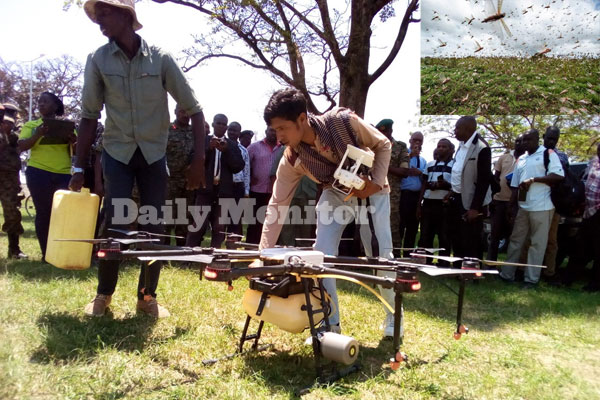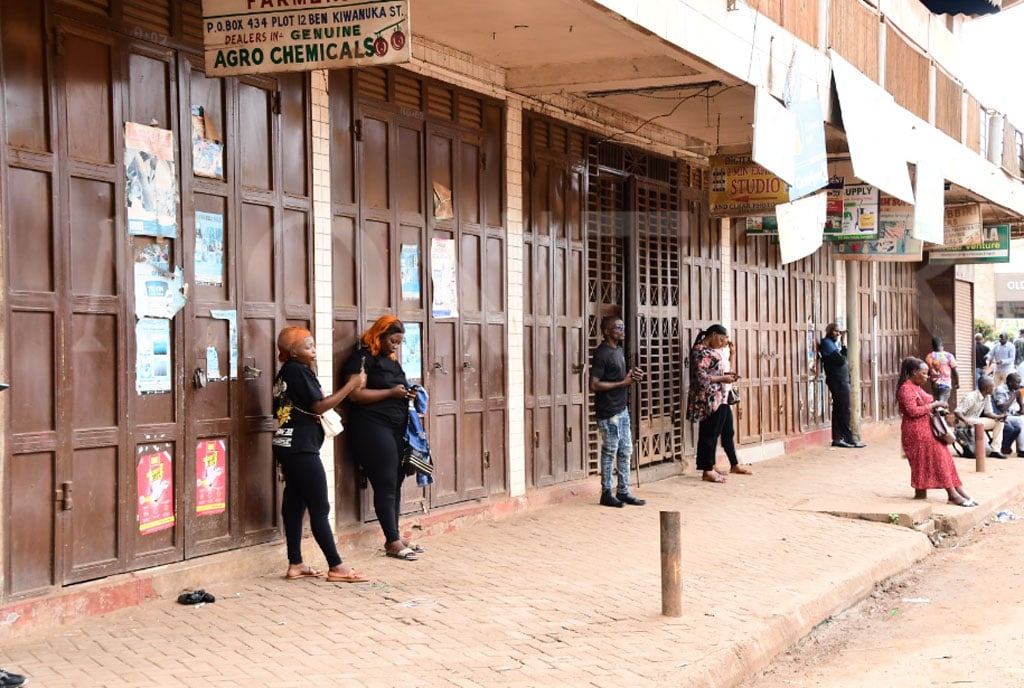Army decry slow government response towards locust invasion
What you need to know:
- Mr Lodungokol said so far, government has released Shs15b to combat the locusts, although Cabinet is expected to released another Shs5b.
The Uganda People’s Defence Forces (UPDF) yesterday expressed reservations about the slow response by the Ministry of Agriculture to the locust invasion.
Speaking at Moroto Barracks where the pesticides and spray cans for tackling the menace had been delivered on Monday, Col Bernard Tuhame, the UPDF 3rd Division operations and training officer, said while the army has mobilised troops to fight the locusts, no ministry official had arrived to train them on application of the pesticides.
“The soldiers are ready for deployment. We have about 200 from the 3rd Division and we are also to receive 800 from UPDF headquarters. What we need now is to be taught how to use the drug and the (spraying) machine,” Col Tuhame said.
READ:
Concern
“Already, the insects are in Kobebe, Kakomongole and Nabilatuk, and they are moving. We need to be taught so that we rush and spray to make sure [they do not] spread to other parts of Uganda,” he added.
Earlier, Mr Martin Owor, the Commissioner for Disaster Preparedness in the Office of the Prime Minister, had said in a communique to the media that the Minister of Agriculture with national and international experts had flown to Moroto District to carry out a one-day training for ground spray teams and launch the spray programme.
Mr John Lodungokol, the assistant commissioner for crop production, who was inspecting the spraying equipment at the barracks, said they were waiting for the locusts to settle in one area so that they could be sprayed.
“The locusts do not stay for long in one area, and it is becoming difficult to do the spraying. However, the training teams are coming to do their work because the chemicals are now in the barracks and we have two more trucks on the move, bringing more chemicals and equipment to Moroto so that they can be distributed to the different areas,” he added.
Since they entered the country on Sunday through Kosike Village in Amudat District, the locusts have been sighted in Acerere, Nakapiripirit, Nabilatuk, Abim, Kobebe, Moroto, Rapa, and Katakwi. They are believed to have moved to Agago District last evening.
While the swarm that invaded Uganda is estimated to be between 50,000 to 500,000 locusts, which ministry officials say is much lower than the numbers that were wreaking havoc in Kenya’s Turkana region, the fact that the locusts have not settled in one place is worrying ministry officials.
“This seems to be the front runner of the swarms of locusts. While the swarms are on the move, our biggest worry is the breeding cycle. The bigger danger will come in March and April during the rainy season when the eggs they are leaving behind hatch. This will be the time when we are planting crops,” Mr Lodungokol said.
“However, although they are landing on trees, we see that the impact (damage) is not big because it is the dry season. They are destroying the little vegetation there as they move,” he added.
Mr Lodungokol said so far, government has released Shs15b to combat the locusts, although Cabinet is expected to released another Shs5b.





